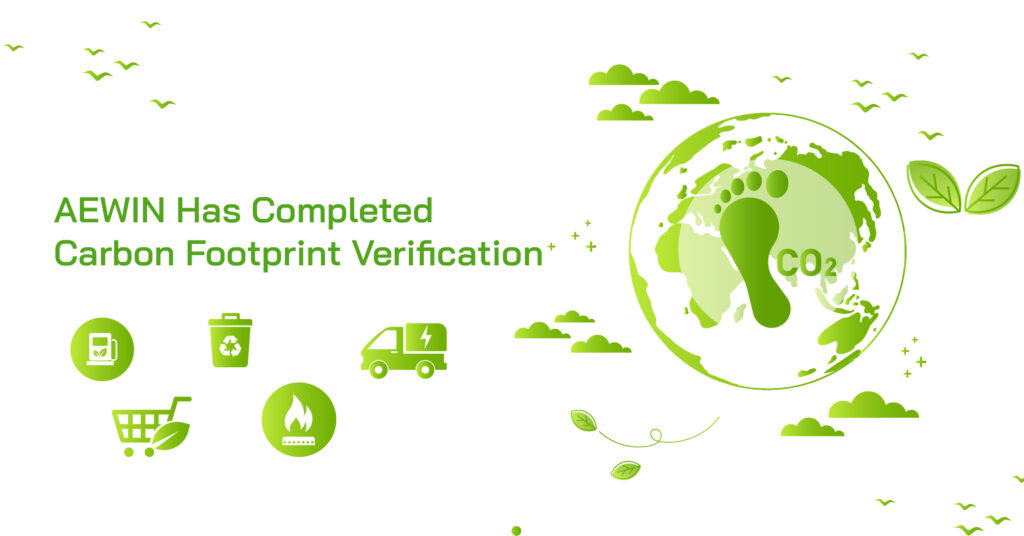
Introduction
As global awareness of environmental issues grows, companies are increasingly held accountable for their environmental impact. As Carbon dioxide (CO2) makes up the vast majority of greenhouse gas emissions, it has been used as a benchmark for assessments. Carbon audits help businesses identify and reduce their carbon footprint, ensuring compliance with regulations and advancing sustainability goals. This blog explores AEWIN’s carbon footprint verification process and its journey toward robust ESG (Environmental, Social, and Governance) integration.
The Importance of Carbon Footprint Verification
Carbon footprint verification is a critical step for company aiming to minimize its environmental impact. It involves measuring and analyzing the greenhouse gases (GHGs) emissions generated by an organization’s activities. This process not only helps identify the sources of emissions but also sets a foundation for developing effective reduction strategies.
For AEWIN, conducting a carbon footprint verification aligns with its ESG objectives, providing transparency and accountability to stakeholders while demonstrating a commitment to environmental stewardship.
Scope and Methodology of AEWIN’s Carbon Footprint Verification
AEWIN’s carbon footprint verification for the year 2023 follows the standards of ISO 14064-1:2018. It ensures comprehensive documentation and accurate reporting of all GHG emissions within the company’s operational boundaries.
The verification process encompasses:
1. Scope 1 Emissions: These direct emissions come from fixed and mobile combustion sources, such as company vehicles and on-site fuel usage. AEWIN also accounts for emissions from equipment like fire extinguishers and refrigeration units, providing a complete picture of its direct GHG impact.
2. Scope 2 Emissions: Purchased electricity sourcing from Taiwan Power Company is the primary of indirect emissions. Other categories are with less score of evaluate factor which are not included in this report while it will be evolved in the following reports.
Carbon Footprint Calculation
AEWIN calculates its greenhouse gas emissions using the formula:
GHG Emissions = Activity Data × Emission Factor × Global Warming Potential (GWP)
- Activity Data represents the quantity of an activity, such as the amount of fuel burned, or a product produced.
- Emission Factor is the amount of greenhouse gas emitted per unit of activity, e.g., the amount of CO₂ produced per liter of gasoline.
- Global Warming Potential (GWP) is a measure of the relative warming impact of a greenhouse gas compared to carbon dioxide. For the values of GWP, AEWIN applied the latest IPCC AR6 standards.
By this calculation, the total greenhouse gas emissions could be determine in terms of carbon dioxide equivalents.
Carbon Footprint Results
The results of AEWIN’s carbon footprint verification reveal critical insights into the company’s environmental impact. For the period from January 1, 2023, to December 31, 2023:
– Direct GHG Emissions (Scope 1): AEWIN’s direct GHG emissions amounted to 38.0099 metric tons of CO2, accounting for 6.18% of the company’s total emissions.
– Indirect GHG Emissions (Scope 2): Indirect emissions totaled 576.8481 metric tons of CO2, making up 93.82% of the overall emissions.
This comprehensive breakdown helps AEWIN understand the relative impact of different activities and target specific areas for improvement.
Strategies for ESG Advancement
AEWIN is committed to integrating ESG principles into its core operations. The carbon footprint verification is a pivotal part of this approach, providing a foundation for ongoing improvement and innovation. Key strategies include:
Energy Efficiency: By enhancing operational efficiency and minimizing unnecessary energy consumption, AEWIN continues to increase equipment efficiency, execute regular maintenance schedules to reduce refrigerant leakage.
Continuous Improvement: Establishing a dedicated Greenhouse Gas Inventory Task Force to monitor, review, and update GHG data regularly. This ensures that AEWIN remains aligned with international best practices and continues to make meaningful progress toward its ESG goals.
Conclusion
AEWIN Technologies’ successful completion of a carbon footprint verification underscores its dedication to environmental responsibility and ESG principles. By thoroughly understanding and addressing its greenhouse gas emissions, AEWIN is taking significant steps toward sustainability.